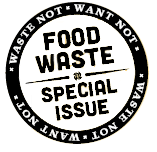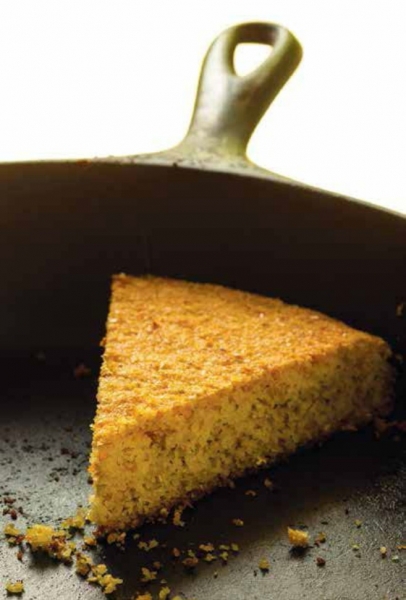Cooking Fresh: That Old-Time Cornbread
It’s hard to beat the original — and don’t even think of adding sugar
Lately there’s been some discussion in serious foodways circles — particularly those concerned with foods of the South—about the absence or not of sugar in cornbread and what that might mean. In my mother’s kitchen in South Louisville, where I learned the art of Real Cornbread, however, there was no discussion at all. There was only the one pure cornbread truth handed down to me from her, to her from her mother, from her mother’s mother and on — generations of women who cooked in cast iron amid coal-filled mountains, and believed this gospel: If God had meant for cornbread to have sugar in it, he’d have called it cake. He didn’t. That’s that.
No sugar became a matter of taste, but it was also initially a matter of practicality. Cornbread was daily bread. Cornbread could be made from the meal  ground from corn that mountain families had grown. Sugar had to be bought at the store. So while it might appear in cakes and pies, in candy made of a cold evening or cookies baked for Christmas, boughten sugar was not a thing to be put in a dish made every day, sometimes twice. Cornbread without sugar, then, is for my people, the taste of independence, of freedom.
ground from corn that mountain families had grown. Sugar had to be bought at the store. So while it might appear in cakes and pies, in candy made of a cold evening or cookies baked for Christmas, boughten sugar was not a thing to be put in a dish made every day, sometimes twice. Cornbread without sugar, then, is for my people, the taste of independence, of freedom.
It’s also just darn delicious, and so not a speck of cornbread was ever left to waste. Leftover cornbread is not the kind of leftover you have to do much with to make another meal of it. I have saved pieces in a plastic bag in the freezer until I’ve had enough to make a good pan of dressing with chopped up celery, onion and drippings from whatever bird or piece of pork I’ve roasted to go with it. I have soaked some overnight to put in pancake batter in the morning with maybe a little bacon to make “Kentucky Cakes.” But these are times of me getting fancy. In the summertime, it is enough for a light supper or a bedtime snack to have leftover cornbread crumbled in a tall glass and covered with cold buttermilk or, as my folks called the plain stuff, sweet milk. The late Eastern Kentucky folk-singing legend Jean Ritchie once told me that “the main best eating there is” would be cold cornbread and black walnut meats, eaten by trading a bite of each with sips of cold milk on the side.
John Fleer, the celebrated chef at Rhubarb in Asheville, North Carolina, and a man who loves to riff on mountain themes, has created a delicious Buttermilk Cornbread Soup on the “crumble in” theme. He garnishes his with tiny bits of cornbread, but if Jean’s story has intrigued you, try a small spoonful of the Black Walnut Pesto below. Both recipes are adapted from Victuals: An Appalachian Journey, with Recipes, by Ronni Lundy (Clarkson Potter, 2016), along with the recipe for Real Cornbread, which follows.
Author Ronni Lundy is a co-founder of the Appalachian Food Summit. She lives in Burnsville, North Carolina. Find her new book Victuals: An Appalachian Journey with Recipes at Carmichael’s in Louisville or Morris Book Shop in Lexington.
RECIPES
John Fleer’s Buttermilk Cornbread Soup
Black Walnut Pesto
Real Cornbread




